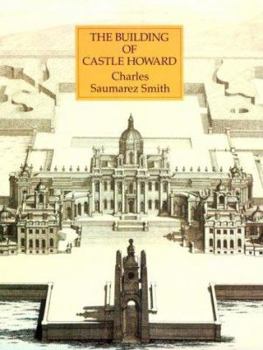The Building of Castle Howard
Select Format
Select Condition 
Book Overview
This book is the first complete study of the circumstances which led to the building of Castle Howard, one of the greatest and best-known English country houses. It describes how and why Charles Howard, third earl of Carlisle, decided to build it; how the architect Sir John Vanbrugh received his first commission; how the building was paid for and where the money came from; what the original interiors looked like; how the gardens and park were laid out; and the decision taken to build the first classical mausoleum in England, designed by Nicholas Hawksmoor. It relates the physical appearance of the architecture to the hopes, desires and personalities of those involved in the building and makes it possible to look at the house in the way that it was intended to be seen by visitors in the eighteenth century. The Building of Castle Howard should appeal to anyone who is interested in eighteenth-century architecture, in the history of gardens, in country houses, and in a historical detective story of a house which Sir John Vanbrugh was determined should be 'the top seat and garden of England.'
Format:Hardcover
Language:English
ISBN:0226764036
ISBN13:9780226764030
Release Date:March 1990
Publisher:University of Chicago Press
Length:240 Pages
Weight:1.85 lbs.
Dimensions:0.9" x 7.8" x 10.0"
Related Subjects
Architecture Buildings Home Decorating & Design Home Improvement & Design HumanitiesCustomer Reviews
2 ratings
A traditional survey but an exceptionally good one
Published by Thriftbooks.com User , 23 years ago
The 'Building of Castle Howard' is a sometimes amusing and consistently fluid account of the conception and construction of the Third Earl of Carlisle's estate in Yorkshire. The patron, from a 'high-handed' and cocky young Whig to a dour but sincere father of miscreant and ungrateful offspring [...] is addressed in the opening chapter, and the rationale behind the demolition of a provincial village to build an architectural showpiece is traced. The architects - Vanbrugh and Hawksmoor - are examined in similar contexts. However, a descrition of Sir Thomas Robinson's incongrous alterations to the splendid mausoleum (1729 - 1745, though Summerson suggested 1742 as the date of completion) is not a sufficient account of his activities at the estate: the northern range of the house features several rooms completed under Robinson's supervision, but these are simply not mentioned. The author combs out an icongraphical programme in Pelligrini's ceiling paintings in the domed hall (ie, the 'Fall of the Phaeton'), but a similar analysis with respect to the garden monuments draws different conclusions. Carlisle's changing position as a patron and politician accounts for this: the estate shifts, in Saumarez Smith's opinion, from being a an opulent panorama to an introverted retirement home for the earl, whom, in his dotage and increasingly unhappy free time, commenced autonomous study in matters of contemporary religious thought. This, therefore, effected his decision to build a grand mausoleum rather than allow his remains to fall into the hands of what his lengthy (and only) poem preserved at Castle Howard, described as corpulent and corrupt Anglican clergmen. As an explanation for the development of the garden buildings, this is not as simplistic as my description might phrase it: the book's account is entirely convincing. I do not imagine that 'The Building of Castle Howard' - an inexpensive but well-illustrated gem - will be in print much into the future. However, its interest is broader than simply an account of architectural patronage. Unlike other studies of 18th Century British art which read as prosaic 'case-studies' (especially in the case of portrait painting, all of which make the same point), Saumarez Smith's book is an autonomous and compelling analysis of specific buildings and their conception, not a dour treatise from which established generalities are laboriously combed out.
FANTASTIC
Published by Thriftbooks.com User , 25 years ago
this book is soo good, (apart from its prise), it describes how were castles built and different types of castles. For the price, ive expected more, but the book is still good.






